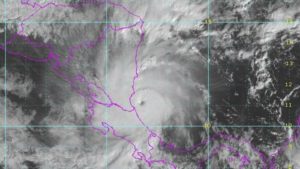On this day in 1972 a 6.2-magnitude earthquake in Managua, Nicaragua, killed more than 10,000 people and left 250,000 homeless. With family in Nicaragua now and frequent travels there I am always aware of the potential for earthquakes, volcanic eruptions and tsunamis. If fact just recently the country was hit with a trifecta of an earthquake, tsunami warning and major hurricane all at once. Oddly enough I feel somewhat safer there than I do in the United States should a major earthquake occur. 
Nicaragua is a developing nation so they don’t have the resources to respond to the consequences of these events like the United States does. They have a very stream-lined form of government control. On the other hand when a Cascadia event occurs in the Pacific Northwest our resources will do little to impact the casualty numbers. Resources allocation decisions will need to be adjudicated, we just won’t have enough or the logistical capacity to move them where they need to go. Decision makers will be hesitant to make the call without a good common-operating picture. Obtaining a good common operating picture will not occur for a week.
We’ll be lucky if only 10,000 are killed initially. I expect that number will go up significantly within a few days either due to the impact of exposure, untreated injuries and lack of medication for chronic illnesses, subsequent aftershocks, fires and lack of potable water.
Our plans are based on lower levels of government asking for help from higher levels. This may work well in “normal” disasters but it will fail during a catastrophic event like a Cascadia. I’ve posted about innovative solutions that could be expanded on nationally but how likely are we to change the way we do disaster business? A recent article offered fours ways that the United States could improve our preparedness for disasters. They included:
- Revising the Stafford Act to meet the needs of the 21st Century
- Establishing a permanent fund for public health emergency response
- Increasing state and local preparedness resources
- Incentivizing more active private sector participation in disasters
We have an opportunity to be better prepared to manage the consequences of a major earthquake in the United States. But we need action not lip service. Failure to act now means we will fall back on our past behavior of taking action after the event. After the death toll is set and the headlines are history.
People in Nicaragua are generally not very interested in what goes on in the United States. I expect after a Cascadia event devastates the west coast of the United States they will be reading headlines just like we did in 1972. What the follow up stories reveal will be based more on what we did before the earthquake than after. Will we take action in time? I’d like to hear your thoughts?




Maybe it’s because I am cold and cranky, but I would put the odds of our spending the cash and time to do the necessary preparation as extremely poor.
Likewise Barbara I am expending effort to stay warm but Glog is tempering my crankiness. I also agree the odds of us changing the way we do disaster preparedness business are slim to none.
I would most definitely agree, the culture within the current fiefdoms are change resistant to a fault. Therefore, all one can do is to work within the span of your control and press others to do the same, revolution starts at home.
It is my sense that few of us train like we expect something major to happen. Even within the responder community it seems more common for people to want to prepare for an event that they have seen on their watch than to train for something large that happened in a different jurisdiction or a different time.
Once upon a time I was around some National Weather Service types who were enlisting the help of Psychologists to help understand how to get citizens to respond appropriately to weather disasters.
Perhaps we might enlist the help of Psychologists to get a better handle on why the professionals don’t play to the level that you expect….and how to motivate them in the right directions.